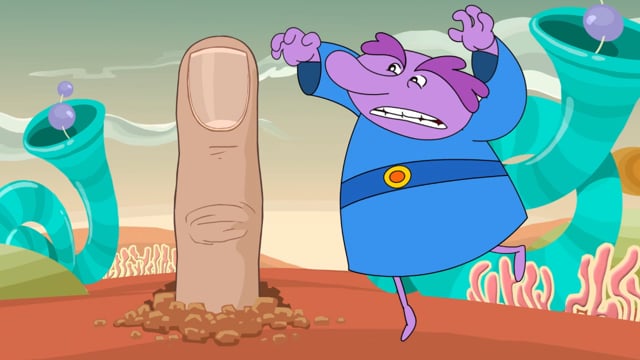Your Nails
What Do Fingernails and Toenails Do?
You may not think about your nails, unless you just painted them blue or your mom says it's time to trim them. But your nails have a job to do. The hard surface of your nails helps to protect the tips of your fingers and toes. And your fingernails make it easier to scratch an itch or remove a dog hair from your sweater.
Nails themselves are made of keratin (say: KAIR-uh-tin). This is the same substance your body uses to create hair and the top layer of your skin. You had fingernails and toenails before you were even born. Where do they come from?
It may look like your fingernails and toenails start growing where your U-shaped cuticle (say: KYOO-tih-kul) begins. But there's more going on under the surface. Nails start in the nail root, hidden under the cuticle.
When cells at the root of the nail grow, the new nail cells push out the old nail cells. These old cells flatten and harden, thanks to keratin, a protein made by these cells. The newly formed nail then slides along the nail bed, the flat surface under your nails. The nail bed sits on top of tiny blood vessels that feed it and give your nails their pink color.
Your fingernails grow slowly — in fact, they grow about one tenth of an inch (2.5 millimeters) each month. At that rate it can take about 3 to 6 months to completely replace a nail.
Where your nail meets your skin is your cuticle. Cuticles help to protect the new nail as it grows out from the nail root. The lunula (say: LOON-yuh-luh) — which comes from the Latin word for "moon" — is that pale half circle just above the cuticle. Your lunula is easiest to see on your thumbnails.
-

How Nails Work
Your nails aren't just there to look pretty. Watch this nails video to find out how nails grow and why you shouldn't bite them!
How Can I Care for My Nails?
You might need an adult to help you trim your fingernails and toenails, which can be a little challenging. A nail clipper or a pair of nail scissors may be used. To smooth jagged edges, you can use a nail file or emery board, which works like sandpaper.
Fingernails should be trimmed straight across and slightly rounded at the top. Having nicely trimmed nails can keep you from biting or picking at them, which can lead to infections. It's also a good idea to moisturize nails and cuticles regularly. A little hand lotion or moisturizer will do the trick.
Because toenails are slowpokes (they don't grow nearly as fast as fingernails), they don't need to be trimmed as often. They should be trimmed straight across, which can be difficult, so you might want to ask a parent for help.
Manicures and Pedicures
Sometimes people get their fingernails and toenails cut and polished by a professional in a salon. Manicures (done on hands and fingernails) and pedicures (done on feet and toenails) are popular services for girls and women (and even some guys!). If you get one, you'll want to be sure the salon follows strict guidelines for cleaning its tools and the stations where hands and feet are washed, trimmed, buffed, and polished.
To prevent infections and other problems, experts recommend taking your own nail clippers and other tools to the manicurist or pedicurist. That's better because you won't be exposed to bacteria and other bad stuff that can linger on the tools that were used on other people's hands and feet.
It can be fun to do your own manicure or pedicure at home, but you may want to ask for an adult's help. Use special care with sharp tools, nail polish, or nail polish remover. These items can be especially dangerous if a little brother or sister gets ahold of them! Also, the ingredients in some nail polishes and removers can be damaging and dry out your nails.
What Are Some Common Nail Problems?
Most of the time, your nails are pink and healthy, but sometimes nails have problems. Some of the most common for kids include:
- ingrown nail — when the nail curves down and into the skin, causing pain and, sometimes, an infection
- nail injury — when you drop something on your big toe or catch your finger in a drawer. A bruise may appear under the nail and sometimes the nail falls off. A new one grows in its place.
- nail deformity — when the nail isn't smooth, like a healthy nail. People who bite or pick at their nails a lot can have this problem, but it also can happen if someone has an illness that affects the nail.
- hangnail — when a loose strip of dead skin hangs from the edge of a fingernail. Hangnails hurt if you pull them off.
Some of these problems, such as a minor nail injury or hangnail, can be handled at home by your mom or dad. But infections and more serious nail injuries need a doctor's care. Signs of a nail infection include pain, redness, puffiness (swelling), and maybe some pus.
What Can Nails Say About My Health?
Don't be surprised if your doctor takes a look at your nails at your next checkup, even if you're having no problems with them. Fingernails provide good clues to a person's overall health.
For instance, when the doctor presses your nails, he or she is checking your blood circulation. By looking at your nails, a doctor may find changes that may be associated with skin problems, lung disease, anemia, and other medical conditions. Your nails are in the know!
